Pierre Molinier est un Peintre et Photographe. Né le vendredi 13 avril 1900 Agen, mort en 1976 à Bordeaux.
Livre Pierre Molinier de Jean-Luc Mercie Livre Pierre Molinier : Jeux de miroirs Vente Ventes : Photographie Moderne et Contemporaine - 25 mai 2016 Vente Enchères : « Artists and Performers » Vente « The forbidden sale » : Pierre Molinier, collection Emmanuelle Arsan Vente Vente aux enchères de photographies modernes et contemporaines le mercredi 30 Octobre à l'Hôtel Drouot Vente Vente Christie's: Agathe Gaillard, souvenirs d'une pionnière de la photographie Vente «Photographies modernes et contemporaines»: vente aux enchères Vente Vente aux enchères au festival Promenades Photographiques à Vendôme Exposition Exposition : « L'éclat du silence » Exposition Exposition : « Sur le fil » de Jean-Hubert Martin Exposition Exposition : « L’Esprit Singulier, La Collection de l’Abbaye d’Auberive » Exposition Exposition : « Rencontres Parisiennes de la Photographie Contemporaine » Exposition Exposition : « Chercher le garçon » au MAC VAL Exposition Exhibition : The Story Of A Bad Boy Exposition Pierre Molinier at M+B Gallery Los Angeles Exposition « Vanished », dans le cadre de Je sème à tout vent? une proposition de David Rosenberg Exposition « Mes jambes, si vous saviez, quelle fumée » par Bruno Geslin et Nicolas Fayol d'après l'oeuvre de Pierre Molinier Exposition Exposition Collective « L'esprit de corps » à la galerie Topographie de l'Art Exposition Quatre artistes dans un mélange de photographie et de peinture Exposition « L'Objet de [Sexe et de] Désir » Exposition Mise en scène selon Irina Ionesco, Igor Josifov et Pierre Molinier Exposition Exposition Pierre Molinier « comme je voudrais être » Exposition Hiéroglyphics of Pleasure at the Galerie 1900-2000 Exposition Hiéroglyphes du plaisir à la Galerie 1900-2000 Exposition Focus on the extreme at the MEP Exposition Autour de l'extrême à la MEP Exposition Arnulf Rainer Pierre Molinier Übermalung Exposition Esprit, es-tu là? Exposition Darkside - Photographic Desire and Sexuality Photographed Exposition Female Trouble The camera as mirror and stage of female projection Exposition Caprice des jeux Exposition Surfaces sensibles Exposition Pierre Molinier Exposition "Pierre Molinier / Jeux de Miroirs" au musée des Beaux-arts de Bordeaux Exposition PIERRE MOLINIER : « Je suis né homme-putain » Modifier l'image
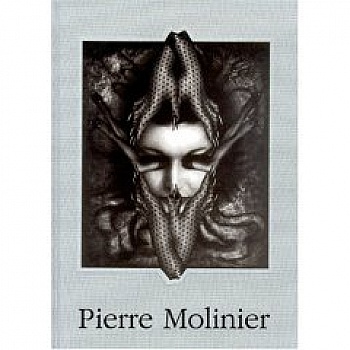 Pierre Molinier's enigmatic photographs influenced European and North American body artists in the early 1970s and continue to engage artists, critics, and collectors today. Viewers are asked to reconsider, with broad implications, the notion o f "deviation" in the sexual o bject and in the sexual aim (transvestism, voyeurism, exhibitionism).
Editeur : Exhibitions International (22 mars 2007)
Collection : Bartschi
Langue : Français
...
Pierre Molinier's enigmatic photographs influenced European and North American body artists in the early 1970s and continue to engage artists, critics, and collectors today. Viewers are asked to reconsider, with broad implications, the notion o f "deviation" in the sexual o bject and in the sexual aim (transvestism, voyeurism, exhibitionism).
Editeur : Exhibitions International (22 mars 2007)
Collection : Bartschi
Langue : Français
...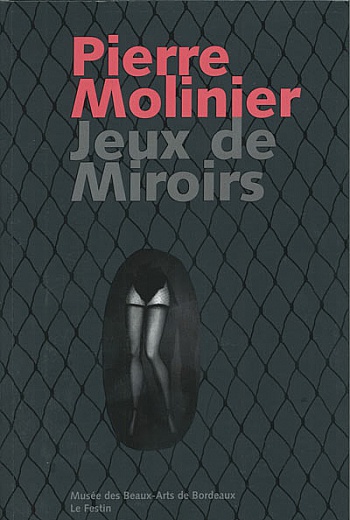 Le livre de l'exposition organisée au Musée des Beaux-Arts de Bordeaux (23 sept.-20 nov. 2005) par les éditions Le Festin.
Événement : pour la première fois, une institution bordelaise rend hommage au peintre et photographe Pierre Molinier. Il faut dire que, depuis la présentation de sa toile Le Grand Combat au Salon des Indépendants Bordelais, en 1951, qui déchaîna les passions, le sulfureux « petit diable » n'a cessé de défrayer la chronique locale. Repéré par André Breton qui lui reconnaît un « pouvoir magique », Molinier abandonnera ensuite ses pinceaux pour transfigurer ses obsessions les plus intimes dans des photomontages devenus légendaires. L'autoportrait, l'autoérotisme, le travestissement, les jambes, les poupées, font partie de ses tropismes les plus fameux.
De Molin...
Le livre de l'exposition organisée au Musée des Beaux-Arts de Bordeaux (23 sept.-20 nov. 2005) par les éditions Le Festin.
Événement : pour la première fois, une institution bordelaise rend hommage au peintre et photographe Pierre Molinier. Il faut dire que, depuis la présentation de sa toile Le Grand Combat au Salon des Indépendants Bordelais, en 1951, qui déchaîna les passions, le sulfureux « petit diable » n'a cessé de défrayer la chronique locale. Repéré par André Breton qui lui reconnaît un « pouvoir magique », Molinier abandonnera ensuite ses pinceaux pour transfigurer ses obsessions les plus intimes dans des photomontages devenus légendaires. L'autoportrait, l'autoérotisme, le travestissement, les jambes, les poupées, font partie de ses tropismes les plus fameux.
De Molin... Le 25 mai prochain, venez découvrir la vente organisée par Viviane Esders Photographie : « Photographie Moderne et Contemporaine »
© Gérard Rancinan "«Batman family girls», 2011 (estimation 35 000-45 000 €)
Hôtel Drouot - Paris - Salle 6 - 14h
Maître Yann Le Mouel, Viviane Esders Expert
© Berenice Abbott, New York by night, 1932 (estimation 15 000-25 000 €)
Expositions publiques
Mardi 24 mai 11h-18h
Mercredi 25 mai 11h-12h
Consultez le catalogue et enchérissez sur le site internet....
Le 25 mai prochain, venez découvrir la vente organisée par Viviane Esders Photographie : « Photographie Moderne et Contemporaine »
© Gérard Rancinan "«Batman family girls», 2011 (estimation 35 000-45 000 €)
Hôtel Drouot - Paris - Salle 6 - 14h
Maître Yann Le Mouel, Viviane Esders Expert
© Berenice Abbott, New York by night, 1932 (estimation 15 000-25 000 €)
Expositions publiques
Mardi 24 mai 11h-18h
Mercredi 25 mai 11h-12h
Consultez le catalogue et enchérissez sur le site internet....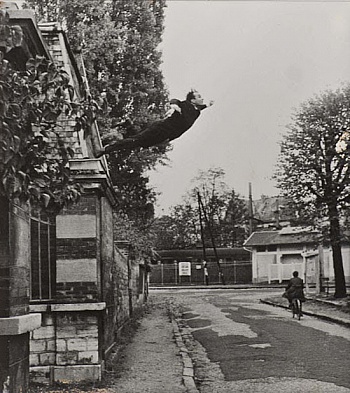 On Thursday 3 December 2015, the PIASA Photography Department will stage a sale devoted to Studio Photography and to different approaches towards the theme of The Portrait – by a variety of artists ranging from Edmond Bénard and Erwin Olaf to Pierre Molinier and Yves Klein.
The sale will also include a major ensemble: the series Our Contemporaries at Home from the Dornac Collection. Between 1880-1910 Paul Marsan, better known as Dornac, took the portraits of leading artists and intellectuals of the day.
Pierre Molinier
Autoportrait nu allongé au loup circa 1955
Epreuve argentique d'époque
7,7 x 10,9cm
2000 / 4000 €
‘The amazing discovery of the Grotte Chauvet, and the incredible public enthusiasm that followed, reflects the contemporary fascination for Arti...
On Thursday 3 December 2015, the PIASA Photography Department will stage a sale devoted to Studio Photography and to different approaches towards the theme of The Portrait – by a variety of artists ranging from Edmond Bénard and Erwin Olaf to Pierre Molinier and Yves Klein.
The sale will also include a major ensemble: the series Our Contemporaries at Home from the Dornac Collection. Between 1880-1910 Paul Marsan, better known as Dornac, took the portraits of leading artists and intellectuals of the day.
Pierre Molinier
Autoportrait nu allongé au loup circa 1955
Epreuve argentique d'époque
7,7 x 10,9cm
2000 / 4000 €
‘The amazing discovery of the Grotte Chauvet, and the incredible public enthusiasm that followed, reflects the contemporary fascination for Arti... Paris – En 2014, pendant Paris Photo, Artcurial a dispersé un ensemble exceptionnel de photographies par André Kertész, rassemblé par un proche de l’artiste. Le 13 novembre prochain, pendant le Mois de la Photo, le département Photographie proposera aux enchères une nouvelle collection majeure : la collection de près de 200 œuvres de Pierre Molinier, réunies par Emmanuelle Arsan qui fut une des muses de l'artiste. Elle regroupe photographies, dessins, clichés d'œuvres et lettres personnelles.
« Pierre Molinier est plus qu'un peintre ou un photographe. Sa fiction, qui se nourrie des deux disciplines, en fait un artiste contemporain avant l'heure. Ses tirages argentiques, qu'il découpe ...
Paris – En 2014, pendant Paris Photo, Artcurial a dispersé un ensemble exceptionnel de photographies par André Kertész, rassemblé par un proche de l’artiste. Le 13 novembre prochain, pendant le Mois de la Photo, le département Photographie proposera aux enchères une nouvelle collection majeure : la collection de près de 200 œuvres de Pierre Molinier, réunies par Emmanuelle Arsan qui fut une des muses de l'artiste. Elle regroupe photographies, dessins, clichés d'œuvres et lettres personnelles.
« Pierre Molinier est plus qu'un peintre ou un photographe. Sa fiction, qui se nourrie des deux disciplines, en fait un artiste contemporain avant l'heure. Ses tirages argentiques, qu'il découpe ... VIVIANE ESDERS, EXPERT - SVV YANN LE MOUEL
VENTE AUX ENCHERES – HOTEL DROUOT - PARIS MERCREDI 30 OCTOBRE 2013 - 14h - SALLE 4
Notre vente du Printemps 2013 a remporté un grand succès avec un produit total de 690.000 € frais compris. Les lots phares de cette vente : Bill Brandt de la série des « Nus » tirage d’époque signé 1953 a décuplé son estimation à 24.700 €. Robert Mapplethorpe « Chrysanthème » tirage d’époque signé de 1989 a triplé l’estimation haute à 32.200 €. Nick Brandt « Elephant in Dust » grand tirage signé de 2011 a atteint le prix de 27.260 €.
Notre prochaine vente aux enchères du 30 octobre 2013 rassemble 287 lots avec une estimation basse de 744.200 ...
VIVIANE ESDERS, EXPERT - SVV YANN LE MOUEL
VENTE AUX ENCHERES – HOTEL DROUOT - PARIS MERCREDI 30 OCTOBRE 2013 - 14h - SALLE 4
Notre vente du Printemps 2013 a remporté un grand succès avec un produit total de 690.000 € frais compris. Les lots phares de cette vente : Bill Brandt de la série des « Nus » tirage d’époque signé 1953 a décuplé son estimation à 24.700 €. Robert Mapplethorpe « Chrysanthème » tirage d’époque signé de 1989 a triplé l’estimation haute à 32.200 €. Nick Brandt « Elephant in Dust » grand tirage signé de 2011 a atteint le prix de 27.260 €.
Notre prochaine vente aux enchères du 30 octobre 2013 rassemble 287 lots avec une estimation basse de 744.200 ...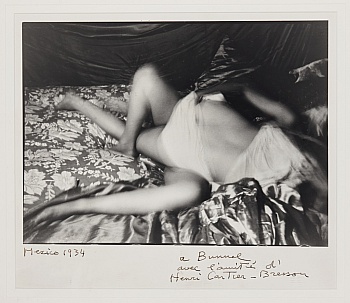 Christie’s a l’honneur d’annoncer la vente, le 14 novembre 2013, de photographies provenant de la collection personnelle d’Agathe Gaillard. Cet ensemble de 169 tirages est le fruit de rencontres et de coups de cœur de celle qui ouvrit la première galerie d’art parisienne consacrée à la photographie, rue du Pont Louis Philippe. De son ouverture à l’été 1975, jusqu’à sa fermeture en 2013, la galerie Agathe Gaillard aura organisé 250 expositions, consacrées à des créateurs aussi essentiels qu’André Kertesz ou Manuel Alvarez Bravo, accueilli des monstres sacrés comme Henri Cartier-Bresson et aidé à l’éclosion de jeunes talents comme Hervé Guibert ou Bernard Faucon. Elle a également accompagné l’incroyable éclosion de ...
Christie’s a l’honneur d’annoncer la vente, le 14 novembre 2013, de photographies provenant de la collection personnelle d’Agathe Gaillard. Cet ensemble de 169 tirages est le fruit de rencontres et de coups de cœur de celle qui ouvrit la première galerie d’art parisienne consacrée à la photographie, rue du Pont Louis Philippe. De son ouverture à l’été 1975, jusqu’à sa fermeture en 2013, la galerie Agathe Gaillard aura organisé 250 expositions, consacrées à des créateurs aussi essentiels qu’André Kertesz ou Manuel Alvarez Bravo, accueilli des monstres sacrés comme Henri Cartier-Bresson et aidé à l’éclosion de jeunes talents comme Hervé Guibert ou Bernard Faucon. Elle a également accompagné l’incroyable éclosion de ...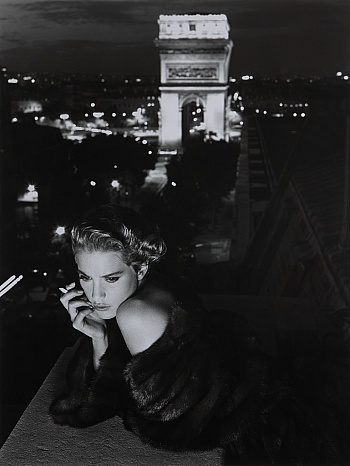 Eugène Atget ouvre la vente de photographies avec quatre très beaux tirages albuminés dont un rare Nu de la série « Paris Pittoresque III » de 1921 (3 000-4 000 €). Un autre tirage de ce « Nu » figurait dans la Collection de Man Ray. Il est actuellement conservé à la George Eastman House, Rochester, N.Y.
La sculpture très renommée de « Léda » de Constantin Brancusi, 1921, photographiée par l’auteur, est représentée par un tirage d’époque exceptionnel (15 000-20 000 €).
MAN RAY : Très rare ouvrage « Résurrection des mannequins » avec les mannequins réalisés par Salvador Dali, Oscar Dominguez, Marcel Duchamp, Max Ernst, Andr...
Eugène Atget ouvre la vente de photographies avec quatre très beaux tirages albuminés dont un rare Nu de la série « Paris Pittoresque III » de 1921 (3 000-4 000 €). Un autre tirage de ce « Nu » figurait dans la Collection de Man Ray. Il est actuellement conservé à la George Eastman House, Rochester, N.Y.
La sculpture très renommée de « Léda » de Constantin Brancusi, 1921, photographiée par l’auteur, est représentée par un tirage d’époque exceptionnel (15 000-20 000 €).
MAN RAY : Très rare ouvrage « Résurrection des mannequins » avec les mannequins réalisés par Salvador Dali, Oscar Dominguez, Marcel Duchamp, Max Ernst, Andr... p { margin-bottom: 0.21cm; }
D'après l'expert Yves Di Maria, « C'est la première fois depuis longtemps qu’un ensemble aussi important de marines de Gustave le Gray est présenté au public. La provenance de ces photographies est tout aussi importante. Contemporain du photographe, l’enseigne de vaisseau Charles Denis Labrousse (1828-1898), plusieurs fois décoré pour ses faits d’armes pendant la guerre de Crimée, a constitué cette belle collection qui nous parvient dans un état de conservation remarquable. ».
Ces photographies des années 1856 à 1858 reflètent avec force la créativité du maître, y compris dans des vues historiques telles La Reine Hortense dans le port Havre &agrav...
p { margin-bottom: 0.21cm; }
D'après l'expert Yves Di Maria, « C'est la première fois depuis longtemps qu’un ensemble aussi important de marines de Gustave le Gray est présenté au public. La provenance de ces photographies est tout aussi importante. Contemporain du photographe, l’enseigne de vaisseau Charles Denis Labrousse (1828-1898), plusieurs fois décoré pour ses faits d’armes pendant la guerre de Crimée, a constitué cette belle collection qui nous parvient dans un état de conservation remarquable. ».
Ces photographies des années 1856 à 1858 reflètent avec force la créativité du maître, y compris dans des vues historiques telles La Reine Hortense dans le port Havre &agrav...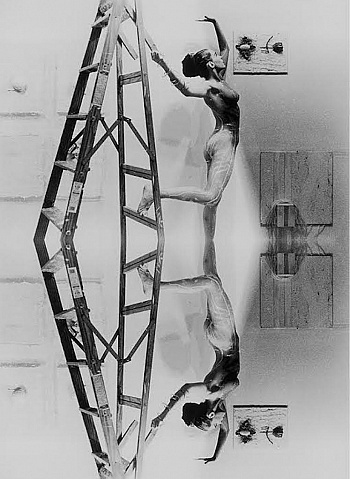 La galerie Sophie Scheidecker propose pour la première fois une exposition consacrée à la photographie argentique en associant Erwin Blumenfeld, František Drtikol, Stéphane Fedorowsky, Jindřich Heisler, Simon Henwood, Pierre Molinier, Roger Parry, Man Ray, Juli Susin, Maurice Tabard, Miroslav Tichy et Raoul Ubac. Pour la première fois également la galerie Sophie Scheidecker fait place à une performance musicale, par l’interprétation d’œuvres musicales de John Cage par Sylvie Robert, qui aura lieu le soir du vernissage, sous forme de représentation unique. « Le silence », œuvre majeure de l’artiste sera présentée en association à son travail de plasticien.
La lumière ...
La galerie Sophie Scheidecker propose pour la première fois une exposition consacrée à la photographie argentique en associant Erwin Blumenfeld, František Drtikol, Stéphane Fedorowsky, Jindřich Heisler, Simon Henwood, Pierre Molinier, Roger Parry, Man Ray, Juli Susin, Maurice Tabard, Miroslav Tichy et Raoul Ubac. Pour la première fois également la galerie Sophie Scheidecker fait place à une performance musicale, par l’interprétation d’œuvres musicales de John Cage par Sylvie Robert, qui aura lieu le soir du vernissage, sous forme de représentation unique. « Le silence », œuvre majeure de l’artiste sera présentée en association à son travail de plasticien.
La lumière ...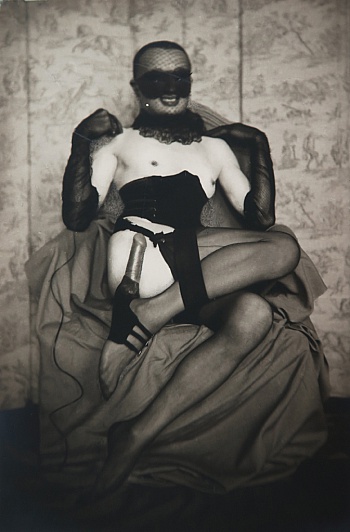 Pour la première fois en France, Jean-Hubert Martin - historien d’art, conservateur et commissaire d’exposition (Magiciens de la Terre (1989), Carambolages (2016), ...) a accepté de répondre à l'invitation de deux galeries parisiennes, christian berst art brut et galerie Jean Brolly d'assurer le commissariat d'une exposition initiant un dialogue fécond entre art brut et art contemporain.
L'exposition Sur le fil est à découvrir à partir du samedi 9 avril 2016, simultanément dans les deux galeries et fait l'objet d'un catalogue de 200 pages avec un texte de Jean-Hubert Martin et des avant-propos de Jean Brolly et Christian Berst.
© Miroslav Tichy
L'art brut est entré dans une nouvelle ère...
Pour la première fois en France, Jean-Hubert Martin - historien d’art, conservateur et commissaire d’exposition (Magiciens de la Terre (1989), Carambolages (2016), ...) a accepté de répondre à l'invitation de deux galeries parisiennes, christian berst art brut et galerie Jean Brolly d'assurer le commissariat d'une exposition initiant un dialogue fécond entre art brut et art contemporain.
L'exposition Sur le fil est à découvrir à partir du samedi 9 avril 2016, simultanément dans les deux galeries et fait l'objet d'un catalogue de 200 pages avec un texte de Jean-Hubert Martin et des avant-propos de Jean Brolly et Christian Berst.
© Miroslav Tichy
L'art brut est entré dans une nouvelle ère... Ils dessinent, peignent, sculptent. Ils collectent des objets de rebuts ou puisent dans la nature traces et empreintes. Ils assemblent, collent. Expérimentateurs primitifs ou raffinés d’un grand art, explorateurs de langages archaïques, magiciens du matériau brut, ou bien même artistes professionnels volontiers libertaires, ils inventent des mondes singuliers, préférant la liberté des chemins insolites, l’audace de la marge, à « l’asphyxiante culture » que pourchassait Dubuffet.
Leur art est profondément en résonance avec l’esprit de notre temps qui sait que les valeurs de l’art sont éphémères et destructibles, comme l’est le monde de la culture, de la Beauté et du V...
Ils dessinent, peignent, sculptent. Ils collectent des objets de rebuts ou puisent dans la nature traces et empreintes. Ils assemblent, collent. Expérimentateurs primitifs ou raffinés d’un grand art, explorateurs de langages archaïques, magiciens du matériau brut, ou bien même artistes professionnels volontiers libertaires, ils inventent des mondes singuliers, préférant la liberté des chemins insolites, l’audace de la marge, à « l’asphyxiante culture » que pourchassait Dubuffet.
Leur art est profondément en résonance avec l’esprit de notre temps qui sait que les valeurs de l’art sont éphémères et destructibles, comme l’est le monde de la culture, de la Beauté et du V...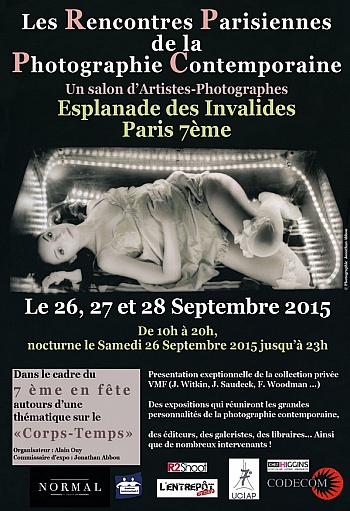 LE MOT DU COMMISSAIRE D’EXPOSITION…
« C’est avec honneur que j’ai accepté la proposition d’Alain Ouy anciennement associé de Cyrille Deflandre, d’être le commissaire d’exposition pour les rencontres parisiennes de la photographie contemporaine, R.P.P.C. qui se substituent à la nuit de la photographie contemporaine.
A la suite de notre regretté Cyrille Deflandre, personnage atypique qui a donné naissance à cette manifestation, j’espère pouvoir relever le défi en vous proposant une véritable photographie d’auteurs, d’artistes, de créateurs. Cyrille avec le fort caractère qu’on lui connaissait, a toujours voulu se démarquer de la médiocrité qui n...
LE MOT DU COMMISSAIRE D’EXPOSITION…
« C’est avec honneur que j’ai accepté la proposition d’Alain Ouy anciennement associé de Cyrille Deflandre, d’être le commissaire d’exposition pour les rencontres parisiennes de la photographie contemporaine, R.P.P.C. qui se substituent à la nuit de la photographie contemporaine.
A la suite de notre regretté Cyrille Deflandre, personnage atypique qui a donné naissance à cette manifestation, j’espère pouvoir relever le défi en vous proposant une véritable photographie d’auteurs, d’artistes, de créateurs. Cyrille avec le fort caractère qu’on lui connaissait, a toujours voulu se démarquer de la médiocrité qui n...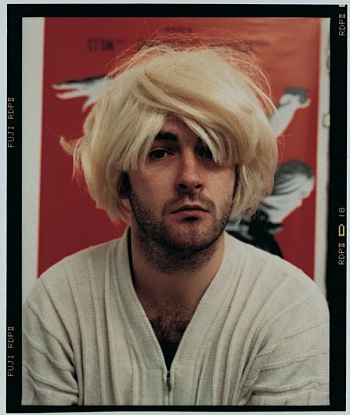 Pour le premier grand rendez-vous de la programmation de l’année de ses 10 ans, le MAC VAL – Musée d’art contemporain du Val-de-Marne présente une exposition thématique pluridisciplinaire.
Qu’est ce qui définit la masculinité aujourd’hui ? Et comment proposer des alternatives à la figure du mâle dominant dans la société patriarcale ?
Pour répondre à ces questions, le commissaire Frank Lamy invite plus de cent artistes hommes, autant de pistes de réflexion autour des modèles culturels de la représentation masculine… de quoi faire tomber certaines idées reçues, aussi tenaces que fragiles. De l’acception de soi et des autres.
Rudas 2. Série «...
Pour le premier grand rendez-vous de la programmation de l’année de ses 10 ans, le MAC VAL – Musée d’art contemporain du Val-de-Marne présente une exposition thématique pluridisciplinaire.
Qu’est ce qui définit la masculinité aujourd’hui ? Et comment proposer des alternatives à la figure du mâle dominant dans la société patriarcale ?
Pour répondre à ces questions, le commissaire Frank Lamy invite plus de cent artistes hommes, autant de pistes de réflexion autour des modèles culturels de la représentation masculine… de quoi faire tomber certaines idées reçues, aussi tenaces que fragiles. De l’acception de soi et des autres.
Rudas 2. Série «... © Tim White-Sobieski - Lab Party Before They Were Beatles, 2004-2005
The Story of a Bad Boy" is a semi-autobiographical novel written by Thomas Bailey Aldrich in 1870. Although loosely based on his own childhood, it is a fictional story of a young boy's experience growing up in the Northeast of the United States. By introducing readers for the first time to a portrait of a boy in less than idealistic light, Aldrich's story is considered to be the foundation of what has come to be called the "bad boy" genre of literature. It has influenced the creation of some of the most memorable characters in storytelling from Tom Sawyer and Huckleberry Finn to Dennis the Menace and Bart Simpson.
This genre of literature has gone beyond the pages of books to film and tel...
© Tim White-Sobieski - Lab Party Before They Were Beatles, 2004-2005
The Story of a Bad Boy" is a semi-autobiographical novel written by Thomas Bailey Aldrich in 1870. Although loosely based on his own childhood, it is a fictional story of a young boy's experience growing up in the Northeast of the United States. By introducing readers for the first time to a portrait of a boy in less than idealistic light, Aldrich's story is considered to be the foundation of what has come to be called the "bad boy" genre of literature. It has influenced the creation of some of the most memorable characters in storytelling from Tom Sawyer and Huckleberry Finn to Dennis the Menace and Bart Simpson.
This genre of literature has gone beyond the pages of books to film and tel...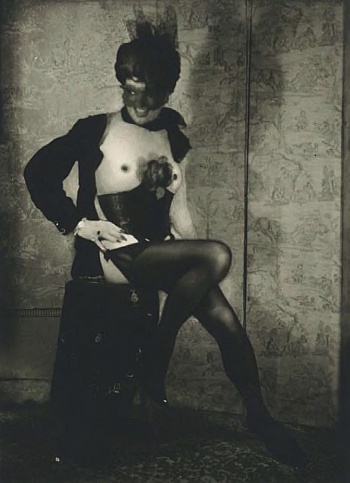 M+B is pleased to present an exhibition of Pierre Molinier’s photomontages alongside a new series of drawings by Aurel Schmidt.
Feelings of obsession, repetition, fetishism, pain, longing, death and the psychedelic tumble throughout the intimate works.
The exhibition runs from May 3 through June 21, 2014, with an opening reception on Saturday, May 3 from 6 to 8 pm.
Both Molinier’s and Schmidt’s work reflect their exquisite craftsmanship, as well as practices that are thoroughly intertwined with their own lives.
Precious and personal, the work is exacting, highly detailed and teeming with overt intimacy. Decorative religious and sexual symbols abound through out the work speaking to memory, fantasy and desire. Fascinating and repulsive, grotesque and refined, the work is meant to both entice a...
M+B is pleased to present an exhibition of Pierre Molinier’s photomontages alongside a new series of drawings by Aurel Schmidt.
Feelings of obsession, repetition, fetishism, pain, longing, death and the psychedelic tumble throughout the intimate works.
The exhibition runs from May 3 through June 21, 2014, with an opening reception on Saturday, May 3 from 6 to 8 pm.
Both Molinier’s and Schmidt’s work reflect their exquisite craftsmanship, as well as practices that are thoroughly intertwined with their own lives.
Precious and personal, the work is exacting, highly detailed and teeming with overt intimacy. Decorative religious and sexual symbols abound through out the work speaking to memory, fantasy and desire. Fascinating and repulsive, grotesque and refined, the work is meant to both entice a...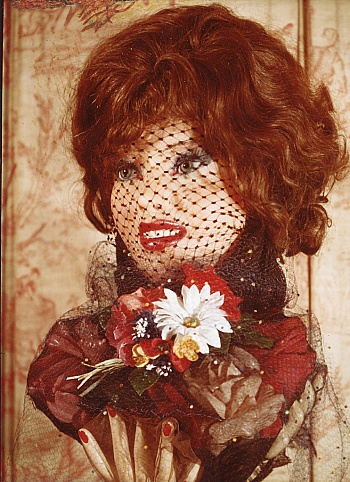 Dans le cadre du parcours «Je sème à tout vent», proposé par David Rosenberg, le Galerie Christophe Gaillard présente le travail de onze artistes de la galerie. Le parcours explore à travers la sensibilité d’une dizaine de galeries parisiennes, la place de la fleur dans l’imaginaire artistique contemporain.
© Pauline Curnier-Jardin, A portrait of Emily Dickinson (they loved my bouquets more than my poems), 2012
«Vanished, group show»
Listes des artistes exposés par la Galerie Christophe Gaillard :
Véronique BOUDIER
Pauline CURNIER
Hélène DELPRAT
Mimosa ECHARD
Pierre MOLINIER
Emmanuel PEILLET
Mathieu PERNOT
Daniel POMMER...
Dans le cadre du parcours «Je sème à tout vent», proposé par David Rosenberg, le Galerie Christophe Gaillard présente le travail de onze artistes de la galerie. Le parcours explore à travers la sensibilité d’une dizaine de galeries parisiennes, la place de la fleur dans l’imaginaire artistique contemporain.
© Pauline Curnier-Jardin, A portrait of Emily Dickinson (they loved my bouquets more than my poems), 2012
«Vanished, group show»
Listes des artistes exposés par la Galerie Christophe Gaillard :
Véronique BOUDIER
Pauline CURNIER
Hélène DELPRAT
Mimosa ECHARD
Pierre MOLINIER
Emmanuel PEILLET
Mathieu PERNOT
Daniel POMMER... " Le travail photographique est à la fois la genèse du spectacle "mes jambes, si vous saviez, quelle fumée", et son prolongement.
Il y a dix ans, pour aborder l'univers complexe de Molinier, nous avons commencé les répétitions par de longues séances de prises de vue dans une maison abandonnée dans la région Nantaise. Pendant que nous nous efforcions de nous immerger dans son univers hallucinatoire, la voix et le rire de Molinier diffusés dans un petit poste de radio semblaient nous soutenir avec malice dans nos explorations.
Nous avions souvent l'impression qu'à force de jouer aux apprentis sorciers, Pierre Molinier allait surgir de derrière un des paravents de toile de jouy, comme un diablotin chauss...
" Le travail photographique est à la fois la genèse du spectacle "mes jambes, si vous saviez, quelle fumée", et son prolongement.
Il y a dix ans, pour aborder l'univers complexe de Molinier, nous avons commencé les répétitions par de longues séances de prises de vue dans une maison abandonnée dans la région Nantaise. Pendant que nous nous efforcions de nous immerger dans son univers hallucinatoire, la voix et le rire de Molinier diffusés dans un petit poste de radio semblaient nous soutenir avec malice dans nos explorations.
Nous avions souvent l'impression qu'à force de jouer aux apprentis sorciers, Pierre Molinier allait surgir de derrière un des paravents de toile de jouy, comme un diablotin chauss... Du 15 novembre 2012 au 6 janvier 2013, expositions collective « l'esprit du corps »
Ce sera l'occasion de découvrir plusieurs tirages argentiques en grand format de Catherine Rebois et d'autres artistes de renommée internationale comme Joel-Peter Witkin, Pierre Molinier, John Coplans et Miroslav Tichy dans la galerie Topographique de l'Art à Paris.
" Ne pas avoir de corps, comme un objet que l'on tiendrait à sa disposition et que l'on pourrait à loisir domestiquer, mais être un corps. Et peut-être n'être que cela. Et vivre avec, s'en débrouiller, traîner avec soi blessures et fatigues, expérimenter plaisirs et désenchantements. Jouer aussi avec d'improbables gestuelles. S'ave...
Du 15 novembre 2012 au 6 janvier 2013, expositions collective « l'esprit du corps »
Ce sera l'occasion de découvrir plusieurs tirages argentiques en grand format de Catherine Rebois et d'autres artistes de renommée internationale comme Joel-Peter Witkin, Pierre Molinier, John Coplans et Miroslav Tichy dans la galerie Topographique de l'Art à Paris.
" Ne pas avoir de corps, comme un objet que l'on tiendrait à sa disposition et que l'on pourrait à loisir domestiquer, mais être un corps. Et peut-être n'être que cela. Et vivre avec, s'en débrouiller, traîner avec soi blessures et fatigues, expérimenter plaisirs et désenchantements. Jouer aussi avec d'improbables gestuelles. S'ave... Pour cette édition de Paris Photo 2011, nous présentons une exposition articulée autour de quatre artistes, et dont le commissariat est assuré par Muriel Berthou Crestey, critique d’art.
" Au-delà de la représentation, certains photographes déjouent les codes traditionnellement associés à la pratique photographique de l’autoportrait, offrant des présentations équivoques d’autres formes de « je » possibles. Orientant leurs objectifs vers ces autres « soi-même », ils masquent ou révèlent alternativement leurs personnalités. Ainsi en est-il des quatre artistes rassemblés dans ce projet curatorial. Entre effacement, exhibition, disparition et mise en lumière, cette redéfinition de l’autoportrait permet d’interroger les diffe...
Pour cette édition de Paris Photo 2011, nous présentons une exposition articulée autour de quatre artistes, et dont le commissariat est assuré par Muriel Berthou Crestey, critique d’art.
" Au-delà de la représentation, certains photographes déjouent les codes traditionnellement associés à la pratique photographique de l’autoportrait, offrant des présentations équivoques d’autres formes de « je » possibles. Orientant leurs objectifs vers ces autres « soi-même », ils masquent ou révèlent alternativement leurs personnalités. Ainsi en est-il des quatre artistes rassemblés dans ce projet curatorial. Entre effacement, exhibition, disparition et mise en lumière, cette redéfinition de l’autoportrait permet d’interroger les diffe...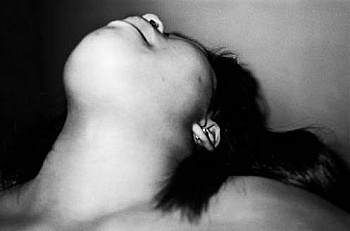 « L’Objet de [Sexe et de] Désir », spécialement imaginée pour l’occasion du Mois de la Photo à Paris.
Exposition réalisée par Liza Fetissova [Russiantearoom] et Lars Schwander [Photographic Center, Copenhague].
« Je t’aime et je te veux sans attendre. Tu es l’objet de mon désir. » J’écoute les paroles de la chanson « Sais-tu où l’amitié s’arrête et où la passion commence ? » Et alors que la voix répond « C’est entre les coutures de ses bas et sa peau »*, je suis dans un autre monde. Un monde de rêves et de désirs. « L’Objet de [Sexe et de] Désir » est une exposition photographique sur la tentati...
« L’Objet de [Sexe et de] Désir », spécialement imaginée pour l’occasion du Mois de la Photo à Paris.
Exposition réalisée par Liza Fetissova [Russiantearoom] et Lars Schwander [Photographic Center, Copenhague].
« Je t’aime et je te veux sans attendre. Tu es l’objet de mon désir. » J’écoute les paroles de la chanson « Sais-tu où l’amitié s’arrête et où la passion commence ? » Et alors que la voix répond « C’est entre les coutures de ses bas et sa peau »*, je suis dans un autre monde. Un monde de rêves et de désirs. « L’Objet de [Sexe et de] Désir » est une exposition photographique sur la tentati...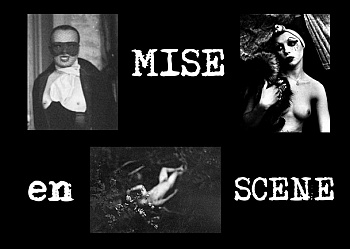 L’univers d’Irina Ionesco est en effet peuplé de femmes aux poses provocantes et aux airs d’héroïnes tragiques, s’offrant dénudées comme des objets de possession sexuelle. Il est le fruit de séances de pose qui sont autant de mises en scène, conçues par l’artiste comme des séquences théâtrales.
Avec la série « Lost Bodies – dying artist », Igor Josifov met en scène, dans le décor offert par de vastes espaces naturels, son propre corps.
Celui-ci, ainsi que le paysage où il est exposé, nu, sont affirmés comme de véritables « objets collaborant au processus de création des images finales. »
Egalement sujet/objet de ses œu...
L’univers d’Irina Ionesco est en effet peuplé de femmes aux poses provocantes et aux airs d’héroïnes tragiques, s’offrant dénudées comme des objets de possession sexuelle. Il est le fruit de séances de pose qui sont autant de mises en scène, conçues par l’artiste comme des séquences théâtrales.
Avec la série « Lost Bodies – dying artist », Igor Josifov met en scène, dans le décor offert par de vastes espaces naturels, son propre corps.
Celui-ci, ainsi que le paysage où il est exposé, nu, sont affirmés comme de véritables « objets collaborant au processus de création des images finales. »
Egalement sujet/objet de ses œu...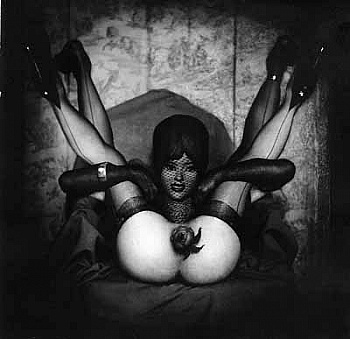 La galerie Christophe Gaillard nous présentera une des plus importante exposition consacré à Pierre Molinier. Pour la première fois, le public aura la chance d'admirer la plus grande présentation photographique des oeuvres de Pierre Molinier . Cet événement retrace l'évolution du travail de l'artiste sur plus de dix années.
Pierre Molinier est né en 1900. Au début , les photographies de l'artiste étaient chargées d'érotisme puis en 1960, il s'interessa au portrait et autoportrait et fera naître des photographies dé-menbrées faisant penser à des créatures androgynes.
Il s'interessa aussi au photomontage et inspira ou sera le modèle de nombreux artistes contemporains, tels que Cin...
La galerie Christophe Gaillard nous présentera une des plus importante exposition consacré à Pierre Molinier. Pour la première fois, le public aura la chance d'admirer la plus grande présentation photographique des oeuvres de Pierre Molinier . Cet événement retrace l'évolution du travail de l'artiste sur plus de dix années.
Pierre Molinier est né en 1900. Au début , les photographies de l'artiste étaient chargées d'érotisme puis en 1960, il s'interessa au portrait et autoportrait et fera naître des photographies dé-menbrées faisant penser à des créatures androgynes.
Il s'interessa aussi au photomontage et inspira ou sera le modèle de nombreux artistes contemporains, tels que Cin... Sexual images are very commonplace today – at least in western society. Nowadays, they are digital images, and this transformation has only served to increase their number and make them easier to distribute. It has “improved” their technical quality, as computer programmes are able to retouch, add to and subtract from them. Light and colour are similarly artificially created. Male and female bodies with the appropriate vital statistics, cameras and computers: this is all that's required to make fixed or moving images of all possible sexual permutations, according to the number of people taking part. The more people there are, the more complex the permutations are: you just have to do the maths.
You start with 2 people, and you end up with 4 or 5 according to your budget. Pornography is sexuality cont...
Sexual images are very commonplace today – at least in western society. Nowadays, they are digital images, and this transformation has only served to increase their number and make them easier to distribute. It has “improved” their technical quality, as computer programmes are able to retouch, add to and subtract from them. Light and colour are similarly artificially created. Male and female bodies with the appropriate vital statistics, cameras and computers: this is all that's required to make fixed or moving images of all possible sexual permutations, according to the number of people taking part. The more people there are, the more complex the permutations are: you just have to do the maths.
You start with 2 people, and you end up with 4 or 5 according to your budget. Pornography is sexuality cont...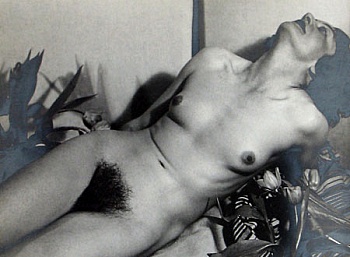 Rien de plus commun aujourd’hui que les images de la sexualité – du moins dans les sociétés occidentales. Autrefois argentiques, elles sont numériques désormais. Ce changement n’a fait que multiplier leur nombre et accélérer leur diffusion. Il a « amélioré » la qualité technique puisque retouches, suppressions et additions sont à portée de programmes. Lumières et couleurs se fabriquent pareillement. Des corps féminins et masculins aux mensurations ad hoc, des caméras, des ordinateurs: ainsi s’obtiennent des vues mobiles ou immobiles de toutes les combinaisons sexuelles possibles selon le nombre des participants. Plus ceux-ci sont nombreux, plus elles sont complexes : toujours des af...
Rien de plus commun aujourd’hui que les images de la sexualité – du moins dans les sociétés occidentales. Autrefois argentiques, elles sont numériques désormais. Ce changement n’a fait que multiplier leur nombre et accélérer leur diffusion. Il a « amélioré » la qualité technique puisque retouches, suppressions et additions sont à portée de programmes. Lumières et couleurs se fabriquent pareillement. Des corps féminins et masculins aux mensurations ad hoc, des caméras, des ordinateurs: ainsi s’obtiennent des vues mobiles ou immobiles de toutes les combinaisons sexuelles possibles selon le nombre des participants. Plus ceux-ci sont nombreux, plus elles sont complexes : toujours des af... The exhibition at the Maison Européenne de la Photographie offers a selection of major photographs from its collection, first created in 1980. Choosing from 20,000 contemporary photographs inevitably involved selecting a theme.
Autour de l’extrême (‘focus on the extreme’) refers to a recurring theme in contemporary art, which constantly attempts to push back social, political, aesthetic or scientific limits. Showcasing work by internationally famous photographers such as Pierre Molinier, Robert Mapplethorpe, Andres Serano and Joël-Peter Witkin, and also pieces by young photographers such as Rodrigo Braga and Raphaël Dallaporta, the exhibition explores all the territories of the visible, from the conquest of the Moon to recent conflicts, and from medical research to experimenta...
The exhibition at the Maison Européenne de la Photographie offers a selection of major photographs from its collection, first created in 1980. Choosing from 20,000 contemporary photographs inevitably involved selecting a theme.
Autour de l’extrême (‘focus on the extreme’) refers to a recurring theme in contemporary art, which constantly attempts to push back social, political, aesthetic or scientific limits. Showcasing work by internationally famous photographers such as Pierre Molinier, Robert Mapplethorpe, Andres Serano and Joël-Peter Witkin, and also pieces by young photographers such as Rodrigo Braga and Raphaël Dallaporta, the exhibition explores all the territories of the visible, from the conquest of the Moon to recent conflicts, and from medical research to experimenta... L’exposition présentée à la Maison Européenne de la Photographie se propose d’offrir un florilège des oeuvres les plus marquantes de sa collection commencée en 1980. Choisir parmi 20 000 oeuvres contemporaines, c’était immanquablement s’imposer un thème.
« Autour de l’extrême » renvoie donc à une des constantes de la création contemporaine qui tend à repousser inexorablement les limites, que celles-ci soient sociales, politiques, esthétiques ou scientifiques. A travers les oeuvres de photographes internationalement reconnus comme Pierre Molinier, Mapplethorpe, Andres Serano ou Joël-Peter Witkin, mais aussi de jeunes photographes comme le Brésilien Rodrigo Braga, ou Raphaël ...
L’exposition présentée à la Maison Européenne de la Photographie se propose d’offrir un florilège des oeuvres les plus marquantes de sa collection commencée en 1980. Choisir parmi 20 000 oeuvres contemporaines, c’était immanquablement s’imposer un thème.
« Autour de l’extrême » renvoie donc à une des constantes de la création contemporaine qui tend à repousser inexorablement les limites, que celles-ci soient sociales, politiques, esthétiques ou scientifiques. A travers les oeuvres de photographes internationalement reconnus comme Pierre Molinier, Mapplethorpe, Andres Serano ou Joël-Peter Witkin, mais aussi de jeunes photographes comme le Brésilien Rodrigo Braga, ou Raphaël ... Rainer, le dernier des iconoclastes
"Rainer rend ici un brillant hommage à Pierre Molinier.
Il effectue à la fois un travail de photographe, en prenant soin de recadrer les œuvres de Molinier, de les flouter, de les recomposer, d’en modifier les couleurs, les perspectives, les accents. [...]
A rayer, biffurer, cacher, il nous donne à voir, revoir et prévoir peut-être aussi. Sorte de « reenactment ».
Il ne s’agit pas de corriger, mais au travers d’une trace, d’un geste, de dévoiler un secret"
C. Gaillard...
Rainer, le dernier des iconoclastes
"Rainer rend ici un brillant hommage à Pierre Molinier.
Il effectue à la fois un travail de photographe, en prenant soin de recadrer les œuvres de Molinier, de les flouter, de les recomposer, d’en modifier les couleurs, les perspectives, les accents. [...]
A rayer, biffurer, cacher, il nous donne à voir, revoir et prévoir peut-être aussi. Sorte de « reenactment ».
Il ne s’agit pas de corriger, mais au travers d’une trace, d’un geste, de dévoiler un secret"
C. Gaillard...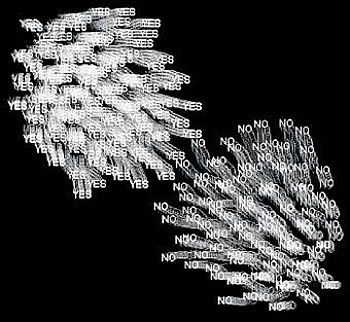 L'art a été tout le long du XXème siècle en prise avec l'esprit ou les esprits. Avec l'essor de la psychanalyse, naissent dès la fin du XIXème, les premières tentatives d'artistes spirites (proche de l'art brut). L'ordre et la mesure commencent alors à céder du terrain face aux dérèglements de l’esprit qui mettent à jour, un foisonnement, une liberté jamais vues
Plus tard, les travaux plus contemporains d'artistes travaillant sous l'emprise de produits hallucinogènes (Henri Michaux et la Mescaline, les artistes de la Beat Génération) prolongeront cette tentation d'interroger un au-delà.
Mais l'esprit ne saurait être réduit à sa seule dimension inconsciente. Une partie de l'art...
L'art a été tout le long du XXème siècle en prise avec l'esprit ou les esprits. Avec l'essor de la psychanalyse, naissent dès la fin du XIXème, les premières tentatives d'artistes spirites (proche de l'art brut). L'ordre et la mesure commencent alors à céder du terrain face aux dérèglements de l’esprit qui mettent à jour, un foisonnement, une liberté jamais vues
Plus tard, les travaux plus contemporains d'artistes travaillant sous l'emprise de produits hallucinogènes (Henri Michaux et la Mescaline, les artistes de la Beat Génération) prolongeront cette tentation d'interroger un au-delà.
Mais l'esprit ne saurait être réduit à sa seule dimension inconsciente. Une partie de l'art...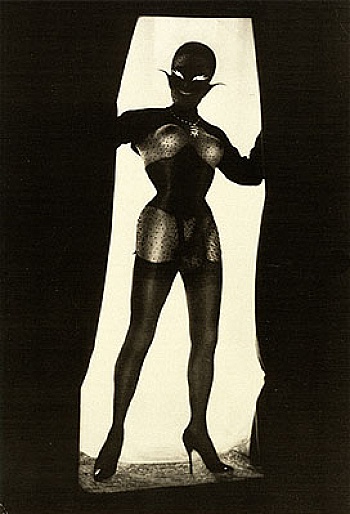 Photography is present everywhere. It plays a formative role in all societies and in private, public, intimate, commercial, and "free" areas of our lives. It is also present in the closed off areas, there where it is "dark", where we withdraw from society, or where acts are excluded from society. For eroticism, sexuality, desire, and identity, photography is a central visual tool: as document, stimulation, instrument of power, and as artistic form of expression.
The exhibition and book project Darkside will discuss photography as an instrument of representation and as an important visual catalyst of sexuality. Photography shows and stylizes lust and passion, fantasy and desire, power and violence, voyeurism and self-presentation in sexuality. Fantasy and desire form a thrilling pact with photograph...
Photography is present everywhere. It plays a formative role in all societies and in private, public, intimate, commercial, and "free" areas of our lives. It is also present in the closed off areas, there where it is "dark", where we withdraw from society, or where acts are excluded from society. For eroticism, sexuality, desire, and identity, photography is a central visual tool: as document, stimulation, instrument of power, and as artistic form of expression.
The exhibition and book project Darkside will discuss photography as an instrument of representation and as an important visual catalyst of sexuality. Photography shows and stylizes lust and passion, fantasy and desire, power and violence, voyeurism and self-presentation in sexuality. Fantasy and desire form a thrilling pact with photograph... Since the invention of photography more than 170 years ago it has been largely women who have used this technical medium to project themselves through role playing and masquerading. As well as the experimental urge to constantly recreate ones ego, the camera has also served as a means of calling into question clichés of female representation. Playing with the image of the eternally feminine was and remains a discourse with gender identity, its social and political definitions and reaching beyond them.
The exhibition focuses on contemporary women artists such as Cindy Sherman, Sarah Lucas, Monica Bonvicini and Pipilotti Rist, who with the aid of photography and video art investigate the female image. The artists explore the question of what image patterns the media age employs for portraying femininity and how t...
Since the invention of photography more than 170 years ago it has been largely women who have used this technical medium to project themselves through role playing and masquerading. As well as the experimental urge to constantly recreate ones ego, the camera has also served as a means of calling into question clichés of female representation. Playing with the image of the eternally feminine was and remains a discourse with gender identity, its social and political definitions and reaching beyond them.
The exhibition focuses on contemporary women artists such as Cindy Sherman, Sarah Lucas, Monica Bonvicini and Pipilotti Rist, who with the aid of photography and video art investigate the female image. The artists explore the question of what image patterns the media age employs for portraying femininity and how t...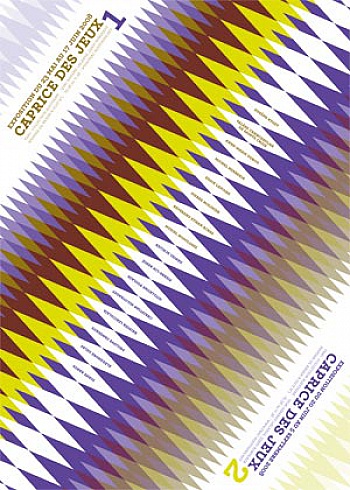 Avec Eugène Atget, Valère Chanceaulme de Sainte Croix, Anne-Marie Durou, Michel Herreria, Eddie Ladoire, Pierre Molinier, Révérend Ethan Acres, Muriel Rodolosse.
Une exposition du 23 mai au 5 septembre 2008 Deux commissaires d'exposition, deux accrochages successifs Claire Jacquet (du 23 mai au 17 juin), vernissage jeudi 22 mai Jean-François Dumont (du 20 juin au 5 septembre), vernissage vendredi 20 juin Le Frac Aquitaine, dans sa tentative de prendre en compte une situation régionale au sens large, prend le parti de construire une exposition mêlant deux figures historiques, Eugène Atget et Pierre Molinier, à des artistes contemporains issus de la scène locale. À quoi s’ajoute une nouvelle oeuvre de la collection, celle du Rév&eacut...
Avec Eugène Atget, Valère Chanceaulme de Sainte Croix, Anne-Marie Durou, Michel Herreria, Eddie Ladoire, Pierre Molinier, Révérend Ethan Acres, Muriel Rodolosse.
Une exposition du 23 mai au 5 septembre 2008 Deux commissaires d'exposition, deux accrochages successifs Claire Jacquet (du 23 mai au 17 juin), vernissage jeudi 22 mai Jean-François Dumont (du 20 juin au 5 septembre), vernissage vendredi 20 juin Le Frac Aquitaine, dans sa tentative de prendre en compte une situation régionale au sens large, prend le parti de construire une exposition mêlant deux figures historiques, Eugène Atget et Pierre Molinier, à des artistes contemporains issus de la scène locale. À quoi s’ajoute une nouvelle oeuvre de la collection, celle du Rév&eacut...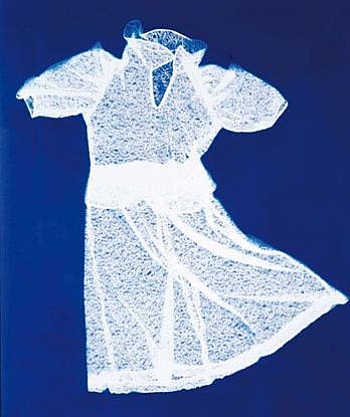 Les photographies mettant en œuvre la dentelle dans sa relation au corps, au vêtement, à la mode ou comme sujet d’expérimentation des procédés photographiques : voici un joli pont « jeté » entre les deux grands départements beaux-arts et dentelle dans les années 1990 alors que la Cité Internationale de la Dentelle et de la Mode n’est alors qu’à l’état de projet.
Aujourd’hui où les deux collections s’apprêtent à prendre leur envol dans deux lieux distincts, il reste entre eux, comme un trait d’union, la thématique des représentations symboliques liées à la dentelle.
Photo :
© Nancy Wilson-Pajic - Musée des beaux-arts...
Les photographies mettant en œuvre la dentelle dans sa relation au corps, au vêtement, à la mode ou comme sujet d’expérimentation des procédés photographiques : voici un joli pont « jeté » entre les deux grands départements beaux-arts et dentelle dans les années 1990 alors que la Cité Internationale de la Dentelle et de la Mode n’est alors qu’à l’état de projet.
Aujourd’hui où les deux collections s’apprêtent à prendre leur envol dans deux lieux distincts, il reste entre eux, comme un trait d’union, la thématique des représentations symboliques liées à la dentelle.
Photo :
© Nancy Wilson-Pajic - Musée des beaux-arts...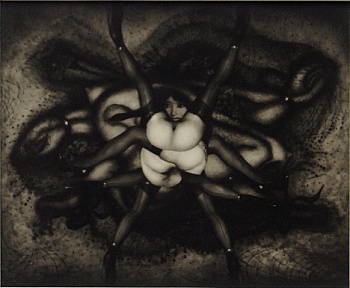 «Notre mission sur Terre est de transformer le monde en immense bordel»
Peintre, photographe, fétichiste de la jambe et du talon aiguille, volontairement provocateur, mais véritablement singulier, Pierre Molinier s'est créé un univers dont il est le grand chaman. Un monde de velours noirs, de lourdes tentures et de miroirs dans lesquels se reflètent ses créatures et ses fantasmes. Né avec le siècle, il en aura très tôt exploré les mutations et obsessions fondamentales. Ses tableaux figurent des étreintes contre nature, des enroulements lascifs de succubes pourvus de sexes masculins et des scènes de fellations entre vouivres. Ses photographies subliment ses perversions et exhibent son narcissisme dans des scènes fantasmatiques et onanistes. L'artiste fétichise le corps en même temps qu'il l'explore...
«Notre mission sur Terre est de transformer le monde en immense bordel»
Peintre, photographe, fétichiste de la jambe et du talon aiguille, volontairement provocateur, mais véritablement singulier, Pierre Molinier s'est créé un univers dont il est le grand chaman. Un monde de velours noirs, de lourdes tentures et de miroirs dans lesquels se reflètent ses créatures et ses fantasmes. Né avec le siècle, il en aura très tôt exploré les mutations et obsessions fondamentales. Ses tableaux figurent des étreintes contre nature, des enroulements lascifs de succubes pourvus de sexes masculins et des scènes de fellations entre vouivres. Ses photographies subliment ses perversions et exhibent son narcissisme dans des scènes fantasmatiques et onanistes. L'artiste fétichise le corps en même temps qu'il l'explore...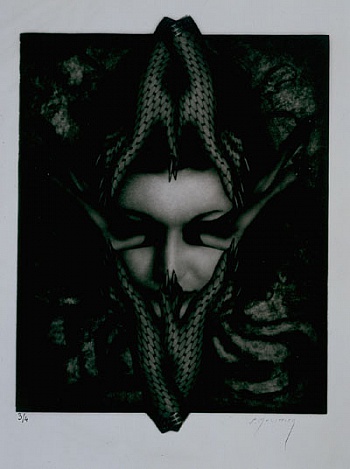 L'exposition "Pierre Molinier / Jeux de Miroirs" est une première à Bordeaux, ville où l'artiste a choisi de vivre, de se mettre en scène, puis de disparaître. Pour beaucoup encore, Pierre Molinier (Agen, 1900 – Bordeaux, 1976) n'est qu'un trublion isolé, provocateur et obscène, alors que son œuvre prend aujourd'hui un relief particulier face aux déconstructions et «brouillages»des genres auxquels les artistes contemporains se livrent sans détour. Afin de rendre hommage à l'un des artistes bordelais les plus célèbres du XX èmesiècle, la galerie des beaux-arts offre une sélection de photomontages de Pierre Molinier, en particulier la série Le Chaman et ses créatures, des peintures emblématiques (Le Grand Combat) et des œuvres sur papier qui replacent son travail dans le champ de la création...
L'exposition "Pierre Molinier / Jeux de Miroirs" est une première à Bordeaux, ville où l'artiste a choisi de vivre, de se mettre en scène, puis de disparaître. Pour beaucoup encore, Pierre Molinier (Agen, 1900 – Bordeaux, 1976) n'est qu'un trublion isolé, provocateur et obscène, alors que son œuvre prend aujourd'hui un relief particulier face aux déconstructions et «brouillages»des genres auxquels les artistes contemporains se livrent sans détour. Afin de rendre hommage à l'un des artistes bordelais les plus célèbres du XX èmesiècle, la galerie des beaux-arts offre une sélection de photomontages de Pierre Molinier, en particulier la série Le Chaman et ses créatures, des peintures emblématiques (Le Grand Combat) et des œuvres sur papier qui replacent son travail dans le champ de la création...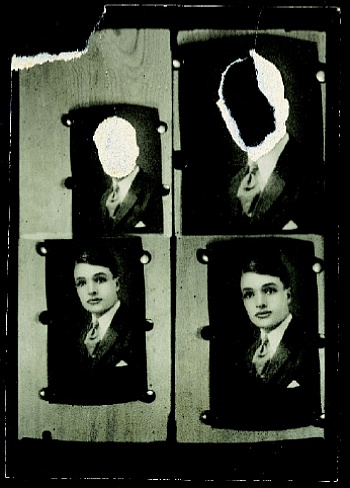 Pour sa seconde exposition, la galerie Kamel Mennour a choisi de présenter les écrits, dessins et photomontages inédits, issus des notes et carnets intimes de l'artiste. Jean-Luc Mercié indique qu' « on y découvre pour la première fois, avec une sorte de soulagement, Molinier tel qu'en lui-même, seul, dégrisé et dégrimé ».
Artiste fétichiste et travesti né en 1900, Pierre Molinier réalisa jusqu'en 1976, l'année de son suicide d'une balle dans la bouche, d'ahurissants autoportraits peints ou photographiques, d'une sophistication extrême, tant du point de vue de la mise en scène que d'un point de vue technique, couvrant toutes les formes de l'autoérotisme.
Outre les dessins inédits et les croquis préparatoires de tableaux connus, l'exposition « je suis né homme - putain » présentera ...
Pour sa seconde exposition, la galerie Kamel Mennour a choisi de présenter les écrits, dessins et photomontages inédits, issus des notes et carnets intimes de l'artiste. Jean-Luc Mercié indique qu' « on y découvre pour la première fois, avec une sorte de soulagement, Molinier tel qu'en lui-même, seul, dégrisé et dégrimé ».
Artiste fétichiste et travesti né en 1900, Pierre Molinier réalisa jusqu'en 1976, l'année de son suicide d'une balle dans la bouche, d'ahurissants autoportraits peints ou photographiques, d'une sophistication extrême, tant du point de vue de la mise en scène que d'un point de vue technique, couvrant toutes les formes de l'autoérotisme.
Outre les dessins inédits et les croquis préparatoires de tableaux connus, l'exposition « je suis né homme - putain » présentera ...